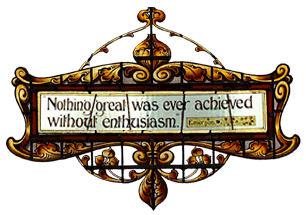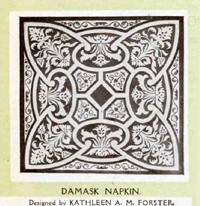
In the mid 19th century Belfast was widely known as ‘Linenopolis’ due to its position as the most prominent manufacturer of linen goods in the world. The Municipal Technical Institute was equipped to train apprentices in all aspects of the trade. On the ground floor of the building a fully functioning linen factory was constructed. Young men and women acquired the skills to turn raw flax into the finished linen cloth. The Art Department complimented this work with instruction in design allowing intricate designs often incorporated into expensive damask cloth produced for discerning markets across the globe. The textiles industry was rigidly hierarchical with the higher paid jobs going to those who possessed essential skills and qualifications, especially in the finishing of the cloth for the higher end of the market. The college played a major role in providing the skills for workers to allow them to get jobs and enhance their earning capacity.

An example of fine Damask work from an early College Prospectus. Many of the designers, trained by the College, won prestigious awards from professional bodies.
This particular piece, named 'Damask Napkin', was designed by Kathleen A. M. Forster.
 This is an image of the Spinning Room on the ground floor of College Square East in 1911 with modern spinning equipment.
This is an image of the Spinning Room on the ground floor of College Square East in 1911 with modern spinning equipment.
 Stained Glass Window in the Central Hall dedicated to textile including a quote to inspire students.
Stained Glass Window in the Central Hall dedicated to textile including a quote to inspire students.
 York Road Spinning Mill -
Then the largest of it’s kind in the world. Many of the workers in this, and similar mills, would have been trained in the college often attending evening classes
York Road Spinning Mill -
Then the largest of it’s kind in the world. Many of the workers in this, and similar mills, would have been trained in the college often attending evening classes


